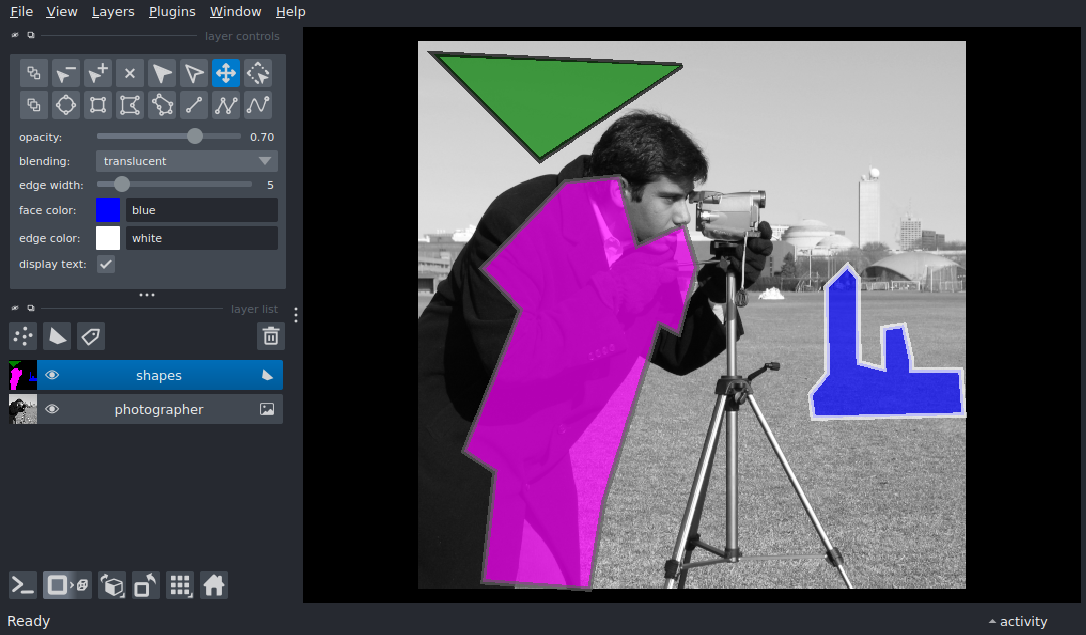Note
Go to the end to download the full example as a Python script or as a Jupyter notebook..
Add shapes with features#
Display one shapes layer ontop of one image layer using the add_shapes and
add_image APIs. When the window is closed it will print the coordinates of
your shapes.

import numpy as np
from skimage import data
import napari
# add the image
viewer = napari.Viewer()
layer = viewer.add_image(data.camera(), name='photographer')
# create a list of polygons
polygons = [
np.array([[11, 13], [111, 113], [22, 246]]),
np.array(
[
[505, 60],
[402, 71],
[383, 42],
[251, 95],
[212, 59],
[131, 137],
[126, 187],
[191, 204],
[171, 248],
[211, 260],
[273, 243],
[264, 225],
[430, 173],
[512, 160],
]
),
np.array(
[
[310, 382],
[229, 381],
[209, 401],
[221, 411],
[258, 411],
[300, 412],
[306, 435],
[268, 434],
[265, 454],
[298, 461],
[307, 461],
[307, 507],
[349, 510],
[352, 369],
[330, 366],
[330, 366],
]
),
]
# create features
features = {
'likelihood': [0.2, 0.5, 1],
'class': ['sky', 'person', 'building'],
}
face_color_cycle = ['blue', 'magenta', 'green']
# add polygons
layer = viewer.add_shapes(
polygons,
features=features,
shape_type='polygon',
edge_width=1,
edge_color='likelihood',
edge_colormap='gray',
face_color='class',
face_color_cycle=face_color_cycle,
name='shapes',
)
# change some attributes of the layer
layer.selected_data = set(range(layer.nshapes))
layer.current_edge_width = 5
layer.selected_data = set()
# To save layers to svg:
# viewer.layers.save('viewer.svg', plugin='svg')
if __name__ == '__main__':
napari.run()
